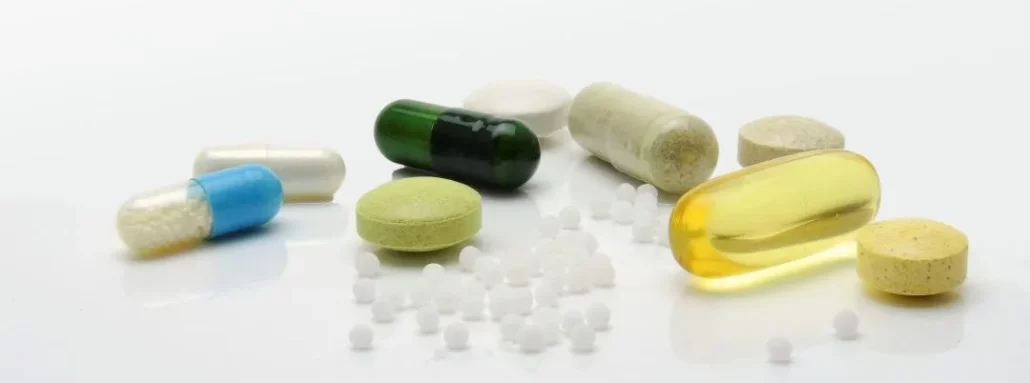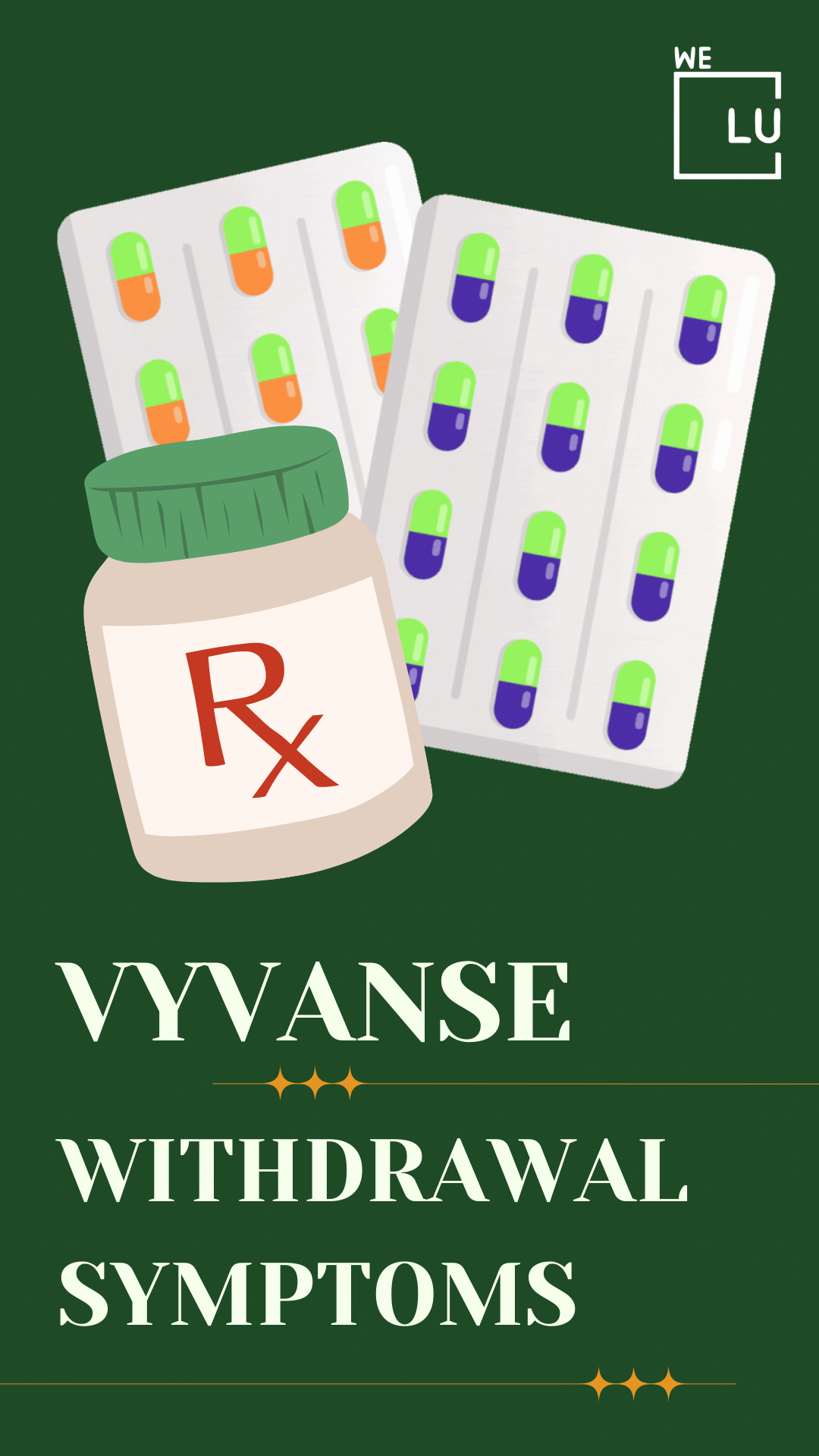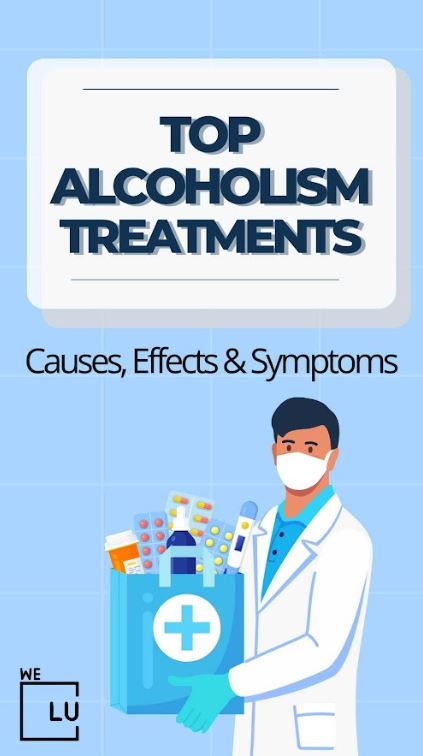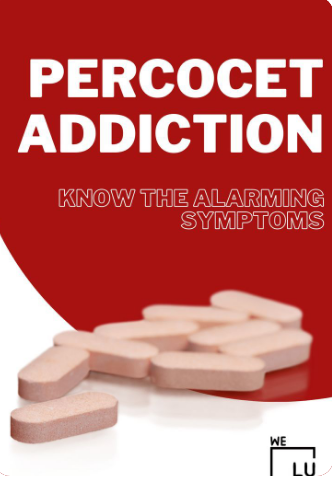Tramadol Withdrawal Symptoms
A prescription painkiller called tramadol is used to treat moderate to severe pain. It functions by altering how the brain interprets pain signals. Tramadol has a good track record for managing pain. Still, it can also be very physically addictive and cause physical dependence, which can cause withdrawal symptoms when the drug is stopped, or the dosage is lowered.
After long-term or high-dose tramadol use, tramadol withdrawal is a physical and psychological symptom that someone experiences when they stop using the drug or cut back. The duration and severity of withdrawal symptoms can range from a few days to several weeks. Anxiety, restlessness, nauseousness, vomiting, diarrhea, sweating, muscle aches, and insomnia are typical tramadol withdrawal symptoms.
It is not advised to try to stop taking tramadol abruptly or without medical supervision, as this can be a difficult and uncomfortable experience. Withdrawal symptoms can be managed through a gradual tapering off of the drug, which enables the body to acclimate to lower doses over time. Supportive care such as nutrition, rest, and hydration can be used to manage withdrawal symptoms.
Withdrawal From Tramadol
Tramadol is an opioid analgesic medication that requires a prescription and is indicated for managing moderate to severe pain. The mechanism of action involves attaching to the opioid receptors in the brain, thereby inducing analgesia and a feeling of elation. Similar to other opioids, the utilization of tramadol may result in physical dependence and addiction. Abrupt discontinuation or rapid tapering of tramadol dosage can result in various withdrawal symptoms in individuals. The aforementioned symptoms may comprise anxiety, restlessness, sleeplessness, muscular discomfort, perspiration, emesis, and diarrhea. The manifestation and persistence of these symptoms may fluctuate based on variables such as the duration and potency of tramadol consumption and the person’s unique physiology.
Symptoms Of Tramadol Withdrawal
The cessation of Tramadol usage may result in a range of physical and psychological symptoms, which can differ in intensity based on the person and their level of drug dependence. What are the potential withdrawal symptoms associated with Tramadol? The following are typical indications of tramadol withdrawal:
- Tramadol withdrawal may induce sensations of anxiety, unease, and agitation, leading to restlessness.
- Insomnia is a common symptom experienced by individuals undergoing tramadol withdrawal, characterized by difficulty falling asleep or maintaining sleep.
- Tramadol withdrawal may lead to gastrointestinal symptoms, including nausea and vomiting.
- Diarrhea may manifest as a potential symptom for some individuals.
- Tramadol cessation may result in excessive sweating (Hyperhidrosis), particularly during nocturnal hours.
- Tramadol cessation may result in myalgia, characterized by discomfort and muscle soreness, particularly in the lower extremities.
- Tremors or shaking may manifest in individuals undergoing tramadol withdrawal.
- Tramadol withdrawal may lead to a transient elevation in blood pressure, which can indicate high blood pressure.
- Tachycardia or arrhythmia may manifest as a symptom of tramadol withdrawal in certain individuals, leading to a rapid or irregular heartbeat.
- Tramadol withdrawal may induce alterations in mood, such as depressive symptoms and irritability.
- Individuals undergoing tramadol withdrawal often encounter severe drug cravings.
How Long Does Tramadol Withdrawal Last?
The duration and severity of withdrawal symptoms can range from a few days to several weeks. Anxiety, restlessness, nausea, vomiting, diarrhea, sweating, muscle aches, and insomnia are typical tramadol withdrawal symptoms.

Skip To:
Learn More:
- Tramadol Detox
- Mixing Tramadol and Alcohol Side Effects, Risks & Overdose Dangers
- Is Tramadol a Narcotic
- Tramadol Serotonin Syndrome
- Tramadol in Pregnancy
- Tramadol Interactions
- Muscle Relaxers
- Mixing Prescription Drugs with Alcohol
- Opioid Addiction Treatment
- Opiate Withdrawal
- Pain Medication List Strongest to Weakest
Get Help. Get Better. Get Your Life Back.
Searching for Accredited Drug & Alcohol Rehab Centers Near You? Or Mental Health Support?
Even if you have failed previously, relapsed, or are in a difficult crisis, we stand ready to support you. Our trusted behavioral health specialists will not give up on you. Call us when you feel ready or want someone to speak to about therapy alternatives to change your life. Even if we cannot assist you, we will lead you wherever you can get support. There is no obligation. Call our hotline today.
FREE Addiction Hotline – Call 24/7Tramadol Addiction Statistics
Tramadol has played a significant role in the U.S. opioid crisis. In 2012, it outranked oxycodone to become the #2 most commonly prescribed opioid in the U.S. There’s also a debate about whether the drug is actually a narcotic. The U.S. Drug Enforcement Administration classified it under Schedule IV of the Controlled Substances Act (CSA), a category of drugs considered to have a “low potential for abuse and low risk of dependence.”
1.6 million Americans
The National Survey on Drug Use and Health (NSDUH) reports 1.6 million people over 12 misused tramadol products in 2016.
Source: NSDUH
41 million
In 2017, 41 million tramadol prescriptions were dispensed.
Source: NSDUH
186%
Between 2000 and 2012, global tramadol consumption increased by 186%.
Source: NSDUH
Tramadol Withdrawal Factsheet
Tramadol Withdrawal Overview
Tramadol withdrawals are physical and psychological symptoms that can occur when someone stops using or reduces their tramadol after prolonged or high-dosage use. Withdrawal symptoms can range from mild to severe and last several days to weeks. Common tramadol withdrawal symptoms include anxiety, restlessness, nausea, vomiting, diarrhea, sweating, muscle aches, and insomnia.
Tramadol Withdrawal Symptoms Treatment
Tramadol withdrawal treatment typically involves a gradual tapering off of the drug, which can help minimize withdrawal symptoms and allow the body to adjust to lower doses over time. Medical professionals may also recommend medications to help manage specific symptoms, such as insomnia or anxiety. Additionally, behavioral therapies and counseling may help address the psychological aspects of tramadol addiction and withdrawal.
It is important to seek professional medical help when experiencing withdrawal from tramadol. Medical professionals can support and guide throughout the process and ensure a safe and effective treatment plan.
Withdrawal Symptoms Of Tramadol (Withdrawal Symptoms From Tramadol)
- Anxiety.
- Restlessness.
- Insomnia.
- Nausea.
- Vomiting.
- Diarrhea.
- Sweating.
- Muscle aches.
- Tremors.
- Rapid heartbeat.
- High blood pressure.
- Depression.
- Mood swings.
- Intense drug cravings.
Symptoms of tramadol for withdrawal can vary in severity and duration depending on the individual and the level of dependence on the drug.
It is important to seek professional medical help when experiencing tramadol withdrawal, as some symptoms can be potentially dangerous and require immediate attention.
Most Popular Tramadol Withdrawal Symptoms FAQs
-
Does Tramadol Cause Withdrawal Symptoms? Can You Have Withdrawals From Tramadol?
Can you withdraw from tramadol? Yes, tramadol can cause withdrawal symptoms, especially if it is used frequently for a long period of time or in high doses. This is especially true when both of these factors are present.
-
Is Tramadol For Opiate Withdrawal Good? Will Tramadol Help With Withdrawal?
Can Tramadol Help With Withdrawal? Tramadol can alleviate some symptoms of opioid withdrawal, but its usefulness is limited. It is important to use it in conjunction with the direction of a physician and as part of an overall treatment strategy.
-
How Long Do Tramadol Withdrawals Last? Tramadol Withdrawal Time
The time it takes to withdraw from tramadol varies, but it usually takes between 5 and 10 days. On the other hand, some people might experience withdrawal symptoms for several weeks after they stop using the substance.
-
Is Tramadol For Alcohol Withdrawal Good?
Tramadol is not typically used as a first-line treatment for alcohol withdrawal, as it is not approved for this use and may have limited effectiveness. Benzodiazepines are typically the first-line treatment for alcohol withdrawal under medical supervision.
-
What helps with withdrawal from tramadol? What helps withdrawal symptoms from tramadol?
Tramadol withdrawal symptoms can be managed in various ways, including medication-assisted treatment, therapy, and support groups. Medications like buprenorphine and methadone can help reduce drug cravings and ease the physical symptoms of withdrawal from opioids and other drug addictions.
-
Can you die from tramadol withdrawal?
The withdrawal from Tramadol is typically non-lethal; however, in uncommon instances, severe symptoms like respiratory depression or seizures may arise, which could harm the patient’s life.
-
Is Xanax For Tramadol Withdrawal Good?
Xanax can alleviate symptoms of anxiety, restlessness, and insomnia frequently experienced during the withdrawal process from tramadol. Nevertheless, the medication must be administered under the supervision of a medical practitioner and for a limited period of time, owing to the potential for dependence and addiction linked to benzodiazepines.
Tramadol Withdrawal Timeline
Tramadol withdrawal how long?
The duration of tramadol withdrawal can fluctuate based on several factors, including the extent of the individual’s dependence, the amount and duration of tramadol usage, and any accompanying medical or mental health conditions.
Typically, the timeline for withdrawal from tramadol can be divided into the subsequent stages:
How long does withdrawal from tramadol take?
- The acute withdrawal phase of tramadol use usually commences within a few hours to a few days after the last dose and may persist for up to a week. During this stage, individuals may experience various symptoms such as anxiety, restlessness, sweating, nausea, vomiting, diarrhea, muscle aches, and insomnia.
- The sub-acute withdrawal phase, which follows the acute withdrawal phase, can persist for several weeks. During this phase, individuals may experience ongoing cravings, mood swings, fatigue, and depression.
- The phase of Protracted Withdrawal can persist for several months or even longer after the final intake of tramadol. During this phase, individuals may experience a range of symptoms, including but not limited to anxiety, depression, insomnia, and persistent drug cravings.

Get Your Life Back
Find Hope & Recovery. Get Safe Comfortable Detox, Addiction Rehab & Mental Health Dual Diagnosis High-Quality Care at the We Level Up Treatment Centers Network.
Hotline (877) 378-4154Tramadol Withdrawal Side Effects
Withdrawals from Tramadol may result in various side effects that differ in intensity and duration based on the patient’s level of addiction and other variables. Typical withdrawal symptoms associated with tramadol may comprise:
Side Effects Of Tramadol Withdrawal
- Agitation.
- Chills.
- Difficulty breathing.
- Dizziness.
- Damage to the nasal membranes.
- Congestion or constant runny nose.
- Higher risk of lung infections.
- Fatigue.
- Heartburn.
- Itching.
- Nervousness.
- Vomiting.
- Damage to the throat, esophagus, and lungs.
Comfortable Facilities & Amenities
High-Quality Addiction & Mental Health Rehabilitation Treatment
Rehab Centers TourRenowned Addiction Centers. Serene Private Facilities. Inpatient rehab programs vary.
Addiction Helpline (877) 378-4154Proven recovery success experience, backed by a Team w/ History of:
15+
Years of Unified Experience
100s
5-Star Reviews Across Our Centers
10K
Recovery Success Stories Across Our Network
- Low Patient to Therapist Ratio
- Onsite Medical Detox Center
- Comprehensive Dual-Diagnosis Treatment
- Complimentary Family & Alumni Programs
- Coaching, Recovery & Personal Development Events
Dangers of Tramadol Withdrawal
Tramadol must be taken solely as prescribed and directed by a physician, despite numerous hazardous consumption methods. Withdrawal tramadol symptoms: Tramadol is considered a form of substance abuse due to its potential to enhance the drug’s effects on the patient’s physiology and heighten the likelihood of developing an addiction. Regrettably, individuals resort to intranasal administration of tramadol to attain heightened euphoria or adverse reactions.
Risk of Seizure
The possibility of a seizure also increases when a person snorts tramadol. There is a potential for seizures to occur even when tramadol is taken in recommended doses but is more likely to happen if a person abuses the drug or has an overdose.
Risk of Breathing Difficulties
Snorting tramadol can cause a person to lose consciousness due to the excessive amounts of the drug entering the body and bloodstream abruptly. Repeatedly Snorting tramadol can also impair the nose’s filtering capacity and cause small amounts of tramadol powder to enter the lungs. If this occurs, it can result in additional breathing problems.
Respiratory Damage
The first and perhaps most obvious danger of snorting tramadol is damage to the respiratory system. Snorting a drug can cause irritation and inflammation in the delicate tissues of your respiratory system. In addition, crushing the tramadol tablet into a powder and snorting it can also increase the risk of respiratory infection.

World-class, Accredited, 5-Star Reviewed, Effective Addiction & Mental Health Programs. Complete Behavioral Health Inpatient Rehab, Detox plus Co-occuring Disorders Therapy.
CALL (877) 378-4154End the Addiction Pain. End the Emotional Rollercoaster. Get Your Life Back. Start Drug, Alcohol & Dual Diagnosis Mental Health Treatment Now. Get Free No-obligation Guidance by Substance Abuse Specialists Who Understand Addiction & Mental Health Recovery & Know How to Help.
What Helps Withdrawal Symptoms From Tramadol?

The manifestation of withdrawal symptoms due to tramadol cessation can be distressing and challenging. However, some measures can aid in mitigating these symptoms.
How To Withdraw From Tramadol?
It is recommended that the withdrawal from tramadol be carried out under the close supervision of a healthcare professional. The tapering method is a commonly employed strategy to alleviate withdrawal symptoms. The recommended course of action entails a gradual tapering of tramadol dosage over a specified duration until the patient is completely weaned off the medication. Additional pharmacological interventions may be recommended to assist in managing withdrawal symptoms, including but not limited to anti-emetics, skeletal muscle relaxants, and anxiolytics.
Along with the prescribed medication, therapy and support groups may be beneficial in addressing withdrawal’s emotional and psychological components. Obtaining medical assistance and counsel is imperative to guarantee a secure and prosperous cessation of tramadol.
Does Tramadol Help With Withdrawal?
Tramadol is an opioid medication utilized to alleviate moderate to severe pain. Henceforth, it is not advisable to employ tramadol to manage withdrawal symptoms as it may result in a pattern of dependence and addiction. It is imperative to adhere to an appropriate withdrawal regimen that gradually reduces the medication while being monitored by a medical practitioner.
It should be noted that certain patients may encounter a decrease in withdrawal symptoms while undergoing withdrawal with tramadol, owing to its opioid characteristics. This approach is not advisable as it may increase dependence and addiction.
Experience Transformative Recovery at the We Level Up Treatment Center.
See our authentic success stories. Get inspired. Get the help you deserve.



Start a New Life
Begin with a free call to an addiction & behavioral health treatment advisor. Learn more about our dual-diagnosis programs. The We Level Up treatment center network delivers various recovery programs at each treatment facility. Call to learn more.
- Personalized Care
- Caring Accountable Staff
- Comfortable Amenities
- Licensed & Accredited
- Renowned w/ 5-Star Reviews
We’ll Call You
Tramadol Withdrawal Treatment
Even if a user is experiencing mild withdrawal symptoms, attending a professional detox center, outpatient treatment program, or inpatient rehabilitation facility can still be beneficial. He or she can be monitored for any medical complications and lower the risk of relapse.
Detox Treatment
The first step in treatment is detoxification. It will help you navigate the complicated withdrawal process but doesn’t address patterns of thought and behavior contributing to Tramadol abuse. Various treatment approaches and settings can help provide the ongoing support necessary to maintain long-term sobriety after you complete detox.
Cravings are very common during detox and can be challenging to overcome. This often leads to relapse. Constant medical care provided during inpatient treatment helps prevent relapse. Clinicians can provide the necessary medication and medical expertise to lessen cravings and the effects of withdrawals.
Psychotherapy
Several different modalities of psychotherapy have been used in the treatment of depression, including:
- Cognitive Behavioral Therapy (CBT) – is an effective treatment that involves changing both the patterns of negative thoughts and the behavioral routines which are affecting the daily life of the depressed person for various forms of depression.
- Dialectical Behavioral Therapy – is a comprehensive mental health and substance abuse treatment program whose ultimate goal is to aid patients in their efforts to build a life worth living. The main goal of DBT is to help a person develop what is referred to as a “clear mind.”
- Person-Centered Therapy – is a strategy that allows and encourages clients to understand and resolve their concerns in a safe, supportive environment.
Dual Diagnosis
Substance abuse and mental health disorders often co-occur. Traumatic experiences can often result in mental health disorders and substance abuse. Dual diagnosis programs in New Jersey treat both of these issues together. The best approach for the treatment of dual diagnosis is an integrated system. This strategy treats both the substance abuse problem and the mental disorder simultaneously. Regardless of which diagnosis (mental health or substance abuse problem) came first, long-term recovery will depend largely on the treatment for both disorders done by the same team or provider.
Medication-Assisted Treatments
Medication-Assisted Treatments (MAT) for substance use disorders and mental health disorders are commonly used in conjunction. This includes the use of medications and other medical procedures. During your rehab, the staff from your treatment facility will help you identify what caused your addiction and teach you skills that will help you change your behavior patterns and challenge the negative thoughts that led to your addiction. Sometimes, the pressures and problems in your life make you rely on substances to help you forget about them momentarily.
Now that we’ve answered the question, “Can you snort Tramadol?” Remembering that Tramadol tends to become a habit-forming drug is important. If you need help with a Tramadol addiction, seek help from trained professionals. Contact one of our helpful treatment specialists today. We Level Up rehab center in New Jersey can provide information on dual diagnosis and detox programs that may fit your specific needs.

Experience Transformative Recovery at the We Level Up Treatment Center.
See our authentic success stories. Get inspired. Get the help you deserve.



Start a New Life
Begin with a free call to an addiction & behavioral health treatment advisor. Learn more about our dual-diagnosis programs. The We Level Up treatment center network delivers various recovery programs at each treatment facility. Call to learn more.
- Personalized Care
- Caring Accountable Staff
- Comfortable Amenities
- Licensed & Accredited
- Renowned w/ 5-Star Reviews
We’ll Call You
Tramadol Withdrawal Symtoms, Prescription Drug Abuse Informative Video
Jen’s Addiction Recovery Testimonial
“I wanted my life back. I was a shell of a person. I wanted to be trusted, I wanted relationships back that I lost, mainly my children and family. It started innocent enough, I got into a car accident and then I got kind of sucked into the whole, you know, medication issue with the pills. And before I knew it, I was in a cloud. I was sucked in by addiction and with my mind, I kept thinking it was OK because a doctor was prescribing this for me, a doctor was giving me this, a doctor was giving me that.
So, I didn’t think I was doing anything wrong. Level Up supports my family and my relationships with my family and they’ve helped me grown as a person. When I first started there, I was so intimidated and kind of scared, you know? But, they’ve taught me, they’ve kind of taught me how to come into my own. And then, you know, when I get the call at the middle of the day from my twenty-one-year-old daughter, just to say ‘I love you, Mom.’, that’s amazing.”
Jen’s Addiction Recovery Testimonial
Search We Level Up NJ Tramadol Withdrawal Symptoms, Timeline & Treatment Topics & Resources
Sources
[1] Tramadol, Codeine, Rohypnol | National Institute on Drug Abuse (NIDA) (nih.gov) tags: tramadol withdrawal symptoms in elderly
[2] Drug dependence and abuse potential of tramadol – PubMed (nih.gov)
[3] Physical dependence potential of daily tramadol dosing in humans – PMC (nih.gov)
[4] Discriminative stimulus effects of tramadol in humans – PubMed (nih.gov)
[5] Tramadol | C16H25NO2 – PubChem (nih.gov)
[6] Tramadol Information | FDA





